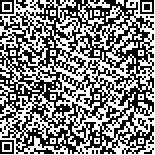| 本文已被:浏览 663次 下载 807次 |

码上扫一扫! |
|
|
| 利用BP神经网络标准化东南太平洋茎柔鱼(Dosidicus gigas)资源丰度 |
|
林泓羽1, 汪金涛1,2,3,4,5, 陈新军1,2,3,4,5
|
|
1.上海海洋大学海洋科学学院 上海 201306;2.农业农村部大洋渔业开发重点实验室 上海 201306;3.国家远洋渔业工程技术研究中心 上海 201306;4.大洋渔业资源可持续开发教育部重点实验室 上海 201306;5.农业农村部大洋渔业资源环境科学观测实验站 上海 201306
|
|
| 摘要: |
| 东南太平洋茎柔鱼(Dosidicus gigas)是短生命周期大洋性经济鱼类,其资源量受环境因素变化的影响较大。根据我国鱿钓船队2013~2017年在东南太平洋的生产统计数据,结合海洋环境数据包括海表面温度(SST)、海表面盐度(SSS)、叶绿素a浓度(chl a),运用BP神经网络(back propagation network)模型来标准化单位捕捞努力量渔获量(catch per unit effort, CPUE,也称名义CPUE)。以均方误差(mean square errors, MSE)和平均相对变动值(average relative variances, ARV)为最优模型判断依据,比较隐含层节点3-10的神经网络模型,发现6-9-1结构为最优模型。用Garson算法解释模型结果,发现各输入层因子对东南太平洋茎柔鱼资源丰度影响重要度排序为chl a、SST、经度(Lon)、SSS、纬度(Lat)、月份(Month)。并作名义CPUE和标准化CPUE资源丰度对比分布图,结果显示CPUE与标准化CPUE总体分布状况基本一致,但局部区域存在明显差异, 80°~85°W及10°~20°S海域适宜鱿钓生产,表明BP神经网络模型可以适用于东南太平洋茎柔鱼的CPUE标准化,从而为鱿钓渔业生产提供一定参考依据。 |
| 关键词: BP神经网络 东南太平洋茎柔鱼 资源丰度 环境因子 |
| DOI:10.11693/hyhz20211200343 |
| 分类号:S931;S932 |
| 基金项目:国家自然科学基金项目,NSFC41876141号。 |
附件 |
|
| THE CPUE STANDARDIZATION OF DOSIDICUS GIGAS IN THE SOUTHEASTERN PACIFIC OCEAN USING BP NEURAL NETWORK |
|
LIN Hong-Yu1, WANG Jin-Tao1,2,3,4,5, CHEN Xin-Jun1,2,3,4,5
|
|
1.College of Marine Sciences of Shanghai Ocean University, Shanghai 201306, China;2.Key Laboratory of Oceanic Fisheries Exploration, Ministry of Agriculture and Rural Affairs, Shanghai 201306, China;3.National Engineering Research Center for Oceanic Fisheries, Shanghai 201306, China;4.Key Laboratory of Sustainable Exploitation of Oceanic Fisheries Resources, Ministry of Education, Shanghai 201306, China;5.Scientific Observing and Experimental Station of Oceanic Fishery Resources, Ministry of Agriculture and Rural Affairs, Shanghai 201306, China
|
| Abstract: |
| Dosidicus gigas is a short-lifespan economic fish,and the resources depends greatly on environmental factors.The production statistics of China's squid fishing fleet in the southeastern Pacific Ocean from 2013 to 2017 were used to standardize the catch per unit effort (CPUE) in BP neural network (BACK Propagation Network) model in combination with marine environmental data (sea surface temperature (SST),sea surface salinity (SSS),chlorophyll a concentration).Based on MSE (mean square errors) and ARV (average relative variances),hidden layer nodes 3~10 from the neural network model were compared,from which the 6-9-1 structure was found the optimal model.The Garson algorithm was used to interpret the model results,and it was found that the order of importance of each input layer factor on the abundance of D.gigas was chl a,SST,longitude,SSS,latitude,and the month.Results show that the distributions of CPUE and standardized CPUE are largely the same.The areas of 80°~85°W and 10°~20°S are suitable for squid fishing operation.Therefore,the BP neural network model can be applied for the CPUE standardization of D.gigas,and provide a reference for squid fishing operation. |
| Key words: BP neural network Dosidicus gigas in the southeast Pacific Ocean resource abundance environmental factors |
